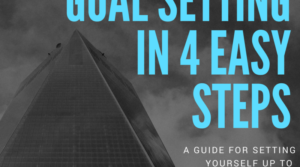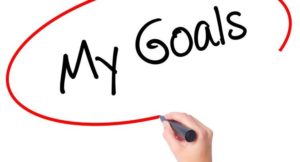Why do you want to exercise? Is it to get a bit fitter? To lose some weight?
Oops! This is exactly where things start to go wrong. If your goals are so vague, and you don’t kick off with clear direction, chances are that you will hit a wall, or stop exercising soon. A vague goal may be of some help to you in the short-term, but not in the long-term.

Before you embark on a fitness or training programme, set yourself clear and realistic long-term and short-term goals.
How to set goals
Step 1: Make a decision about the importance of exercise in your life

Decide to make time for exercise. To reap real benefits, you need to exercise at least three to four times per week, at least 30 – 40 minutes per session. So you need to put aside about an hour every second day.
Be tough on yourself: only you can make the decision to either improve or neglect your health and your body.
Step 2: Evaluate your fitness history
![]()
Answer the following questions as truthfully as possible:
- How long did your previous exercise programmes last?
- Why were your previous exercise programmes unsuccessful?
- What were the stumbling blocks?
- Were your previous exercise programmes practical? Did they fit into your life? Did you want to row while being far from a lake or the sea? Did you want to cycle but had to borrow a bicycle every time? Did you jog, but without a buddy?
- Why did you stop?
- Did your work take up all your time?
- How much did you enjoy your previous exercise programme(s) on a scale of 0 – 5?
Your answers to these questions will start providing you with clues to why you didn’t or couldn’t stick to your previous programme(s).
Step 3: Determine your long-term goal

- What do you want to achieve within the next three to six months? State your objectives very clearly. (If your long-term goal is further away than one year, you may lose interest).
- Do you want to:
a) Get fit? How fit? How far do you want to run or walk or cycle or swim? How fast? Be realistic – you cannot get fit for the Comrades in three months, but you can train for a 10 km fun run.
b) Lose weight? How many kg? (calculate a realistic weight loss pace at 0,5 kg per week). What should your waist size be?
c) Build muscle? Or tone your muscles? Do you want /need to focus on specific areas of your body?
d) Become more supple and flexible? Exactly what would you like to achieve? Touch the floor with your palms when bending over?
State the exact date you want to achieve your goal(s), e.g. 30 November. Jot down your objectives and goals in a diary.
Step 4: Determine your short-term goal
Well, now that you know that you’d like to run 10 km before 30 November, or cycle 100 km by 10 December, or lose 8 kg within four months, or run a half marathon within six months, or look like Demi Moore in GI Jane by June, set yourself monthly and weekly goals to achieve your ultimate goal.
Write down weekly and daily targets that can be ticked off as you meet them. Your targets should be as clear and precise as possible:
- Start off very gently, and do not strain yourself at all during your first week or two of training.
- If you run, increase your running time by about 10 percent per week. Work with progressively heavier weights, or do more repetitions. Increase your water intake, or fruit intake, and decrease your fat intake.
Culled From m.health24.com

